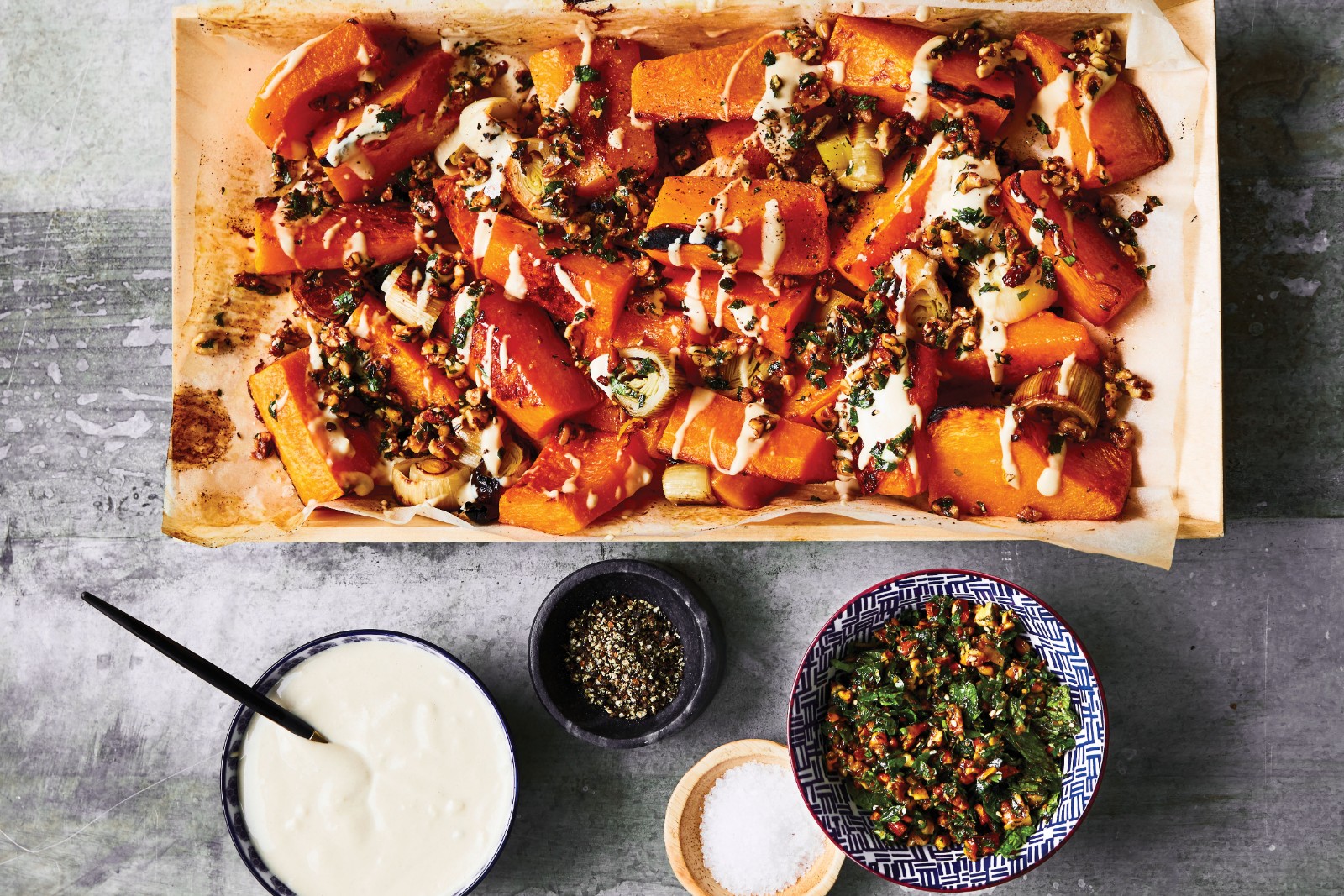If you’ve spent time in Israel, you know tahini. The nutty spread, called tahina there, is made of pressed, roasted sesame seeds, and is served on just about everything — on toast, topped with date syrup; drizzled on falafel; spooned on warm plates of hummus. Nutritious, filling, and chameleon-like in that it can be served sweet or savory, it is delicious either way.
For most Americans, tahini is a little-known condiment with a funny name. But thanks to three sisters originally from Maryland, things are changing.
Tahini has been around Israel since its earliest days, but it got an upgrade about 15 years ago. That’s when some Israeli importers changed the sourcing of their sesame seeds. Rather than looking to China, India, or Mexico, they began bringing in white sesame seeds from the Humera region of Ethiopia, widely considered the world’s best. Coupled with new technology, this tahini 2.0 was creamier, lighter, and more luscious than the tahini that came before.
People took note and Amy, Jackie, and Shelby Zitelman acted on it when they founded Soom, named for soom soom, the Hebrew word for sesame.
The Nosher celebrates the traditions and recipes that have brought Jews together for centuries. Donate today to keep The Nosher's stories and recipes accessible to all.
The company’s story goes like this: Jackie, the middle of the three, was living in Israel and dating Omri Horvitz, a tahini “expert.” Shelby, the eldest, came to spend a year there after having earned a business degree from the Wharton School at the University of Pennsylvania. She tasted the tahini that Omri was distributing and flipped over its silky texture and delicious flavor. One night, Shelby had dinner at Omri’s home. His mom served carrot cake for dessert made with tahini. Shelby had heard of tahini in hummus, but in a cake? How could that be?

Shelby learned that tahini was mightily healthy — high in protein, calcium, iron, and minerals like phosphorus and magnesium. It was non-dairy. Vegan. Delicious to boot. Ding, ding, ding! Might there be a market for the stuff in the United States?
She had Amy, the youngest of the three (then a senior in college), do some market research. Ask people if they know what tahini was. Check local stores to see if they sold it. If they did, in which aisle? The answers were no, sometimes, and on the bottom shelf of the international section, usually coated in dust. “We realized,” said Amy Zitelman, now the CEO of Soom, “that there was an opportunity to better introduce tahini to the American market.”
So they did. In the seven years since the sisters founded Soom, their tahini has been embraced by James Beard award-winning chefs like Michael Solomonov and Alon Shaya, New York Magazine, and Bon Appetit. Today, they sell around 50,000 pounds of imported tahini from Israel each month, including at Whole Foods, and on Amazon.
Now, Amy Zitelman has come out with a cookbook, co-authored with food writer Andrew Schloss, The Tahini Table: Go Beyond Hummus with 100 Recipes for Every Meal.
https://www.instagram.com/p/CGZ17uLAUHS/
In it, Zitelman shares the secret to light and creamy tahini sauce. First, of course, is to use the best tahini. Then, when turning the tahini paste into tahini sauce, Zitelman advises using ice-cold water. “It makes a fluffy, delicate, and creamy tahini sauce. Add the cold water little by little, and whisk away.” The consistency can vary, “My favorite thing about tahini sauce,” says Zitelman, “is that it can be thick like hummus or thin like a salad dressing. It all depends on how much water you add.”
Zitelman keeps tahini sauce in the refrigerator for up to a week and uses it to brighten dressings or to drizzle on roasted vegetables.“Having something quasi-prepared and ready to go is a great practice in Middle Eastern cooking,” says Zitelman. “There is a spontaneity of gathering in Israel. When people stop by, you want to be able to quickly assemble food.”
Her favorite recipe in the book is a roasted butternut squash dish with roasted walnuts, za’atar, and an orange-and-lemon-juice-infused tahini sauce, which she has made “hundreds of times.”

And if you aren’t (yet) a fan of tahini? “Start,” says Zitelman, “with our tahini-maple granola. Tahini provides a rich nuttiness. What’s great about tahini is that it can serve as a complement to most dishes you pair it with. It doesn’t overpower at all. It brings out the best of what you are mixing it with.”
Ultimately, says Zitelman, “Our goal is to get Soom tahini on every [store] shelf so it can be in every pantry. Have it become something people use every day in their cooking.” As Chef Alon Shaya writes in a blurb for the book: “Tahini is your new ketchup…it deserves a spot on your coveted condiment shelf.”
We couldn’t agree more.



